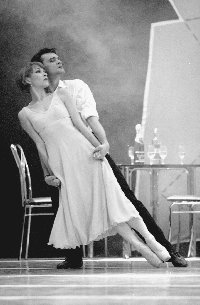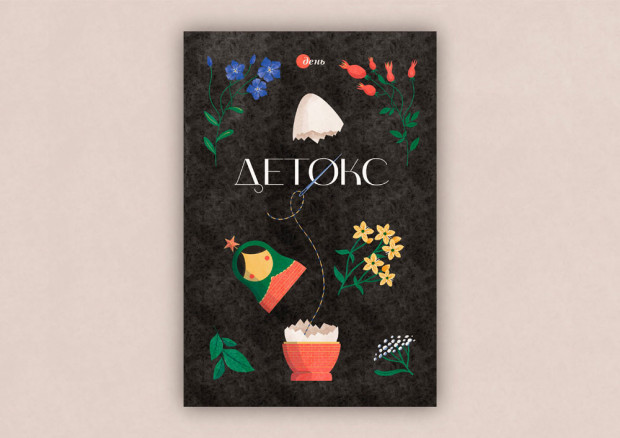Modern Ballet: Ukrainian Version

Kyiv devotees know him mostly as an invariable member of the Serge Lifar Festival's jury. One cannot but wonder whether the maestro would accept his own work if submitted to the festival as so many ballet entries.
The purpose of this much-advertised project is simple: first, to show the National Opera's genuine and irresistible desire to keep pace with the international ballet community (who will now have the nerve to say that its repertoire lacks modern productions?); secondly, the name of the Ukrainian Austrian choreographer on the billboards adds class to the whole affair. Shortcomings? Sorry, we are talking modern ballet, something entirely new for us. It is not just modern, it is almost postmodern! Something not all can fully grasp. Not yet anyway.
What, then, do we have in the end? A production hastily put together (and the organizers made no secret of the fact, as the rehearsals took less than a month), with a concept few can understand and every dramatic statement made point blank. The whole thing strongly reminds one of a ballet starring Mikhail Baryshnikov that made headlines in the late 1970s: cafe with cigarette smoke, bizarre characters, and strange dances. The background makes pas obviously borrowed from Don Quixote look especially out of place. All choreographic numbers are tied by a rather abstract problem: communicating in the modern world. I cannot say about the modern world, but in this particular production communicating is a real problem that remains to be solved, both in terms of choreography and music.
As the music starts everyone recognizes the now boring theme from Cameron's Titanic. Of course, Seline Dion is gorgeous, especially as a hit parade leader. But as a lyrical pas de deux the soundtrack sounds a bit too straightforward. Even the mix of rock and roll classics with Mahler is poor consolation. One determines the difference between culture and mass culture by taste. In this sense Alex Ursuljak seems to have messed up the ingredients.
Incidentally, some of the reviews show a characteristic trend. Modern dancing (modern ballet) appears to be identified with the variety show. And so many in the audience rejoiced at seeing familiar show numbers rendered with academic skill. All right, journalists can make mistakes, but choreographers and those hiring them must make sure what kind of dancing they prefer - rather, what genre best suits a given episode/scene and the level of ambition.
The cast includes first rate dancers, with Viktor Yaremenko and Tetiana
Biletska who can make any choreography attractive. There are also young
soloists who, unless they can arrange for a contract abroad, may find their
professional experience reduced to such experimentation. And once again
Ukrainian ballet will be outside the "world context" which we are determined
to enter, choosing its routes of approach without proper forethought.
Newspaper output №:
№45, (1998)Section
Culture





